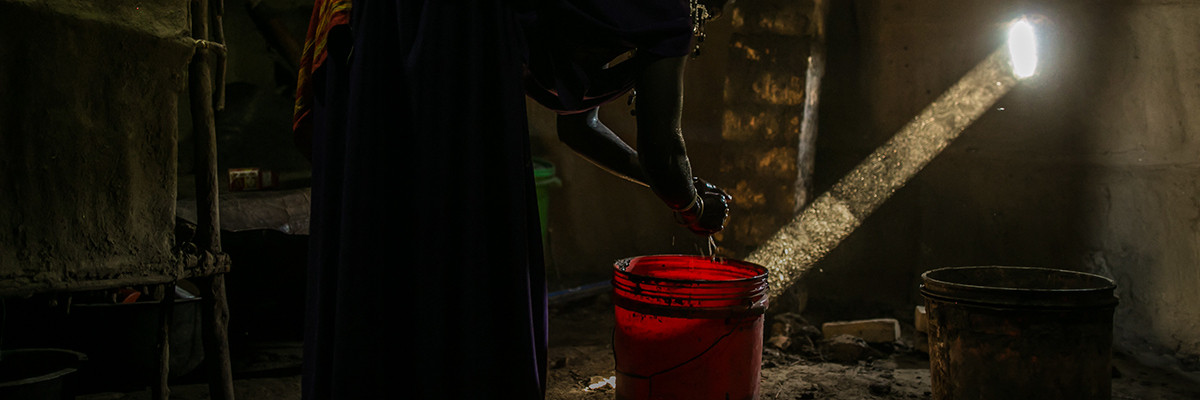
Photo: USAID, flickr
Authors
-
Aude Ucla
Former Associate Director, Consumer Sectors, BSR
From healthcare to education to food preparation, the world relies on access to energy for essential services and everyday needs. But 1.2 billion people still lack access to reliable power, and 2.7 billion people do not have safe, clean cooking solutions. This overwhelming need underlines the importance of Sustainable Development Goal 7, which is to “ensure access to affordable, reliable, sustainable, and modern energy for all.”
Governments are pouring resources into energy access—both carbon-intensive and sustainable energy options. But the greatest potential for expanding sustainable energy may rely on the private sector, which has seen significant growth in sustainable energy business models that rely on decentralized solutions, rather than on traditional grid-electricity infrastructure. These flexible solutions, which require less investment capital, are well suited for low-income, rural populations. For example, the market for off-grid solar lighting products in Africa saw a 300 percent growth in sales between 2009 and 2012.
Nevertheless, market penetration of solar lighting products in Africa remains below 5 percent, and very few energy-access business models have proved scalable and profitable. Base-of-the-pyramid consumers have limited financial capacities and can be difficult to reach through traditional distribution networks. Yet, because small amounts of money represent significant investments for them, these customers expect high-quality products—even if the energy costs are low, they want guarantees that their money will not be wasted.
Private-sector actors will have to get off the beaten track if they want to conquer the off-grid market. To do this, they can rethink their business models; design products and solutions tailored to customers’ evolving needs; and, importantly, pilot new collaborations involving startups, development agencies, or NGOs. Pioneering these types of partnerships give multinationals credibility and market access to reach the people most in need of the opportunities they can provide.
Three examples of innovative collaboration demonstrate how to reach populations most in need of energy:
- Total and d.light: Collaboration between flexible startups, which can design products tailored to end-customers’ needs, and multinationals, which can lower the final cost of those products through economies of scale and their extensive distribution networks, is key to move to the next generation of solar products. French oil and gas major Total has set up a long-term partnership with d.light, a company that designs portable, water-resistant solar products (increasing access to solar also aligns with Total’s recent acquisition of 60 percent of SunPower, the second-largest U.S solar panel manufacturer). Total brought to the partnership its wide network of service stations across Africa, strong brand image (including among low-income customers), and logistics. Distribution costs of d.light products have significantly decreased, keeping prices more affordable for target consumers.
- Vodafone and M-Kopa: Partnerships can also use existing but novel infrastructure to reach customers in developing countries. For instance, although electrification rates range around 29 percent in sub-Saharan Africa, mobile penetration is higher, above 40 percent, and is expanding rapidly. M-Kopa Solar, a Kenya-based startup, helps low-income customers acquire solar systems by purchasing small, daily-usage credits—corresponding to the price they would have paid for kerosene. After a year or so, customers have contributed enough daily payments to own their solar systems, and can even upgrade to a greater capacity. M-Kopa Solar relies on an existing, widely accessible, and popular payment system—the mobile-phone money transfer service M-Pesa, which was launched in 2007 by Vodafone, Safaricom, and Vodacom, and had nearly 19.8 million Kenyan users in 2014.
- The Coca-Cola Company, Ericsson, and Solarkiosk: Some consumer products or technology companies have a strong presence and trusted brand in developing countries, which can be used to promote sustainable energy access and community benefits. The Coca-Cola Company, Ericsson, Millicom subsidiary Tigo, and German startup Solarkiosk have partnered to build and implement solar-powered community centers called EKOCENTERs, which sell or provide solar products, mobile-charging stations, safe water, internet access, and other basic services.
By focusing on the factors of success of these unusual alliances, multinational companies, smaller start-ups, and nonprofits can scale access to affordable, sustainable energy in the developing world. This will create business and development benefits, bringing us closer to a low-carbon, inclusive economy and to the success of Sustainable Development Goal 7.
BSR’s latest sustainability insights and events straight to your inbox.
Let’s talk about how BSR can help you to transform your business and achieve your sustainability goals.